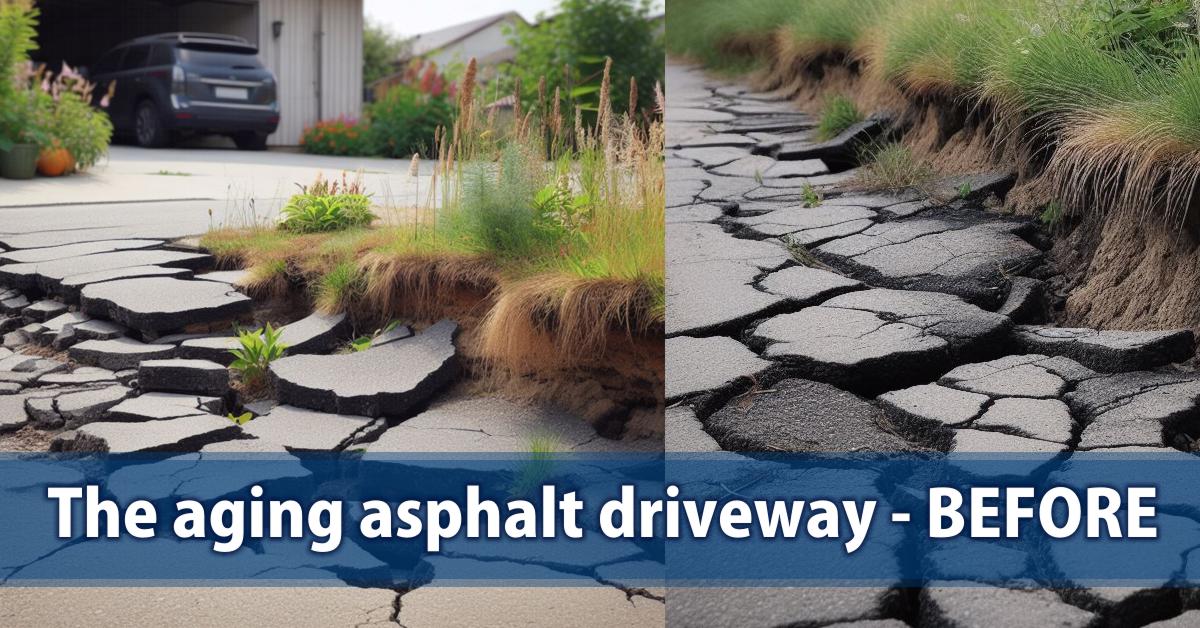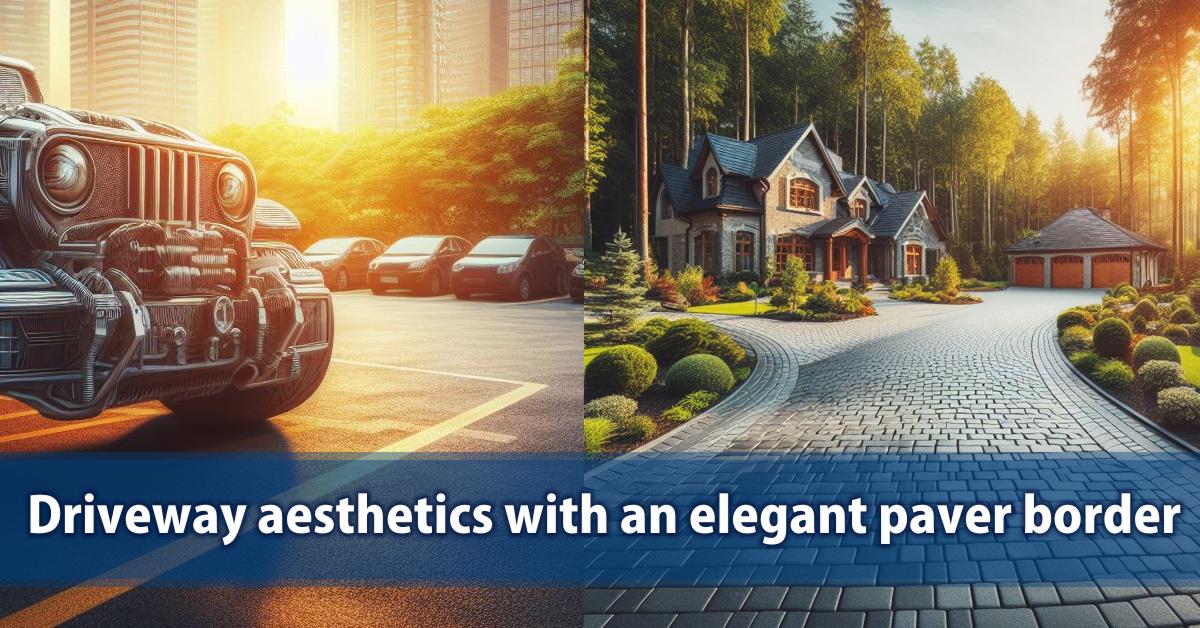Creating a well-defined, durable, and aesthetically pleasing edge for your asphalt driveway is crucial for both functionality and curb appeal. Driveway edging not only enhances the overall look of your property but also helps in maintaining the integrity of the asphalt by preventing cracking and spreading. Affordable asphalt driveway edging can be achieved using various materials and methods that balance cost-effectiveness with visual appeal and durability. Finishing off the edges of your asphalt driveway with decorative, protective borders is an easy upgrade that enhances aesthetics and longevity. Rather than leaving driveway edges exposed, a variety of edging solutions create clean, durable transitions from pavement to lawn, garden, or landscape beds.
Asphalt Driveway Edging Ideas
Luxury Steel Parking Place Edging

Luxury Steel Driveway Edging

Brick Edging Fresh Pavement

Brick Edging

Concrete Asphalt Driveway Edging

Concrete Asphalt Edging

Plastic Asphalt Driveway Edging

Stone Edging For Asphalt Driveway

Stone Edging For Asphalt Homeyard

Benefits of Asphalt Driveway Edging
As an experienced civil engineer and construction specialist, I recommend properly finishing asphalt driveway edges with decorative, protective borders. Based on my experience, I have seen numerous benefits of high-quality edging provides:
Aesthetic Enhancement
Edges create an attractive, clean visual delineation between the smooth blacktop and adjacent green lawn or landscaping. This manicured finish dresses up the property visually. Popular border options like pavers cut stone, and colored concrete offer designers flexibility to match or contrast the driveway style with other yard hardscapes.
Damage and Deterioration Protection
Vehicle bumps, plowing, frequent traffic, and substrate movement all can cause unprotected asphalt edges to gradually crack, crumble, and unravel over time from both shear and fatigue stresses. Finishing edges help prevent this type of asphalt pavement distress.
Cleared Vegetation Border
Vegetation can dislodge pavement, spread to cracks, and present aesthetically around the edges over time. Defined edges with pavers, timbers, rock, or other stabilizing materials maintain a clear vegetation-free transition between the driveway and lawn. This also facilitates easier mowing, trimming, and chemical spraying around driveways.
Improved Drainage Control
Some edging types can double as shallow drainage swales that direct rainwater runoff from the driveway surface away from the edges where erosion damage is most likely. Even borders like pavers include sand or gravel joints that allow surface infiltration versus sheet flow directly off the asphalt. This better controls drainage prevents undermining by flowing water, and minimizes erosion issues around driveway perimeters.
Property Value Enhancement
Curb appeal matters, and clean finished asphalt edges potentially help maximize property values upon selling. The improvement can be a worthwhile investment for homeowners.
Asphalt Driveway Edging Benefits Summary
This is how I will summarize the driveway edging benefits for my readers.
| Benefit | Pavers | Gravel | Concrete | Timbers |
|---|---|---|---|---|
| Aesthetic Improvement | ✅ | ✅ | ✅ | ✅ |
| Damage Protection | ✅ | ✅ | ✅ | ✅ |
| Cleared Vegetation | ✅ | ✅ | ✅ | ✅ |
| Drainage Control | ✅ | ✅ | ✅ | ✅ |
| Property Value | ✅ | ✅ | ✅ | ✅ |
Case Study: Asphalt Driveway Edging Renovation
Here is a case study from a recent client driveway renovation:
BEFORE
The aging asphalt driveway edges were severely crumbled and cracking with grass and weeds encroaching:

Major cracks extended over 12 inches into the driveway pavement along 60% of the perimeter. The client routinely had to weed-whack vegetation around the edges each month during the growing season. Runoff drained directly onto the compromised edges, worsening deterioration with each rainfall. Overall appearance was very poor.
AFTER
To fully renovate the driveway borders, I recommended installing new concrete paver edging:

The pavers totally transformed the driveway aesthetics with an elegant paver border matching the style of the front walkway landscaping. By excavating and compacting an aggregate base, the pavers also reinforced the edges to prevent further cracking and deterioration. No more vegetation could spread onto the asphalt surface. The sand joints improved localized infiltration. The client was very pleased with the dramatic improvement through this edging upgrade.
Cost-Benefit Analysis
While quality edging materials do present an upfront investment, the cost is typically paid back through:
- Reduced future asphalt repairs and replacements
- Lower vegetation control maintenance
- Less frequent pressure washing to remove moss and dirt buildup
- Improved drainage resulting in less erosion damage
- Potentially higher property value and faster sales price
I recommend homeowners perform a 10-year cost-benefit analysis to quantify the expected payback and ROI on asphalt driveway edging improvements. The results often justify the expenditure for upgraded borders. Let me know if you need any guidance assessing options for your unique property needs!
Asphalt Driveway Edging Materials and Options
As a civil engineer, I am often asked for recommendations on finishing asphalt driveway edges. Many elegant and affordable options exist to create durable, decorative borders that enhance the driveway while requiring minimal maintenance. In my experience popular materials include:
Poured Concrete Borders
Installing a concrete perimeter is one of the most durable solutions. Concrete borders include:
- Contoured or square profiles – Smooth rounded contours or right-angled edges
- Strength – Concrete withstands freeze-thaw, vehicle impacts, plowing
- Reinforcement – Strengthens vulnerable asphalt edges against cracking
- Standard gray or decorative – Color tinting, stamps, or exposed aggregates
- Matches hardscapes – Can coordinate with walkways, walls, and curbs
- Wide size range – From 6 inches up to 2 feet wide borders
Concrete does have a higher upfront installation cost requiring excavation, forming, pouring, and finishing. But it certainly provides the strongest edging option with minimal maintenance needed.
Interlocking Concrete Pavers or Bricks
For a more decorative look, concrete pavers create attractive finished edges:
- Variety of shapes, styles, and patterns provides flexible design options
- Durable and weather-resistant materials provides freeze-thaw cycles
- Reinforced perimeter prevents asphalt edge breakdown
- Coordinates with other hardscapes and matches walkways or patios
- Range of colors available integrates with landscape palette
Properly installed pavers offer lasting beauty, stability, and decoration possibilities.
Gravel or Crushed Stone
Gravel makes a simple, adaptable solution for loose, informal edging:
- Inexpensive – Crushed gravel is budget-friendly
- Flexible – Easily regraded and maintained over time
- Soil separation – Contains unwanted vegetation spread
- Permeability – Allows drainage unlike solid borders
- Avoid sharp aggregates – To prevent tire punctures if vehicles cross
The downside is that crushed stone requires periodic maintenance, replenishment, and weed control. But it works well for more natural settings.
Landscape Timbers or Railroad Ties
Timber borders add rustic, natural curb appeal:
- Wood appearance – Provides contrasting texture
- Matches other exterior wood – Fencing, benches, trim
- Edge restraint – Helps contain gradual asphalt edge creep
- Separates asphalt from soil – Timbers absorb vehicle bumps
- Preservative treatment recommended – For longevity in outdoor elements
Keep timber borders slightly separated from direct asphalt contact, allowing space for expansion.
Metal or Plastic Landscape Edging
Lightweight commercial edging products offer simple solutions:
- Thin aluminum, steel, or plastic – Roll or sectional strips
- Quick installation – Flexible to curve in place
- Effective vegetation barrier – Stops weed and grass growth
- Various colors available – Integrate with other landscaping
- Lower durability for high-traffic – Gradual deterioration over time
Follow manufacturer specifications carefully during installation.
Asphalt Edge Reinforcement
Specialty-reinforced edge restraints for driveways include:
- Preformed asphalt or polymer strips – Adhere along the perimeter
- Strengthens edges – Prevents cracking and raveling
- Quick application – Adhere to existing edges
- Top dressing recommended – Gravel to hide strip view
- Effective but not decorative – Focus is reinforcement
These fortified borders restore and maintain stable pavement edges.
Asphalt Edging Material Comparison
| Material | Durability | Decorative | Cost | Maintenance |
|---|---|---|---|---|
| Concrete | High | ✅ | High | Low |
| Pavers | High | ✅ | Medium | Low |
| Gravel | Medium | ✅ | Low | Medium |
| Timbers | Medium | ✅ | Medium | Medium |
| Plastic/Metal | Low | ✅ | Low | Medium |
| Asphalt Strip | High | ❌ | Medium | Low |
With the range of options available, you can certainly find the right edging style and budget for your property’s unique asphalt driveway.
Typical Installation Costs
Edging material costs will vary based on type, size, and length:
- Poured concrete borders – $5-$15 per linear foot installed
- Concrete pavers – $3-$12 per square foot depending on style, pattern complexity
- Gravel – $40-$70 per cubic yard
- Landscape timbers – $3-$7 per linear foot
- Metal landscape edging – $1-$4 per linear foot
- Asphalt edge reinforcement – $4-$8 per linear foot
Any excavation, gravel base materials, and labor will add cost. Expect higher prices in areas with very high labor rates.
Key Installation Considerations
Proper installation technique ensures your asphalt driveway edging solutions last for years to come:
- For pavers or concrete, excavate 4-6 inches deep and lay a compacted gravel base for stability.
- Allow a 1/4 – 1/2 inch gap between the asphalt edge and rigid borders to accommodate expansion.
- Include subsurface drainage provisions if prone to erosion or moisture issues.
- Follow manufacturer instructions for installing commercial landscape edging products.
- Backfill and compact soil thoroughly around edging to prevent settlement shifting.
- Slope soil away from edges to direct drainage off driveway surface.
- Select angular gravel materials with good interlocking characteristics for loose borders.
- Avoid excessive drifting of loose borders onto the driveway surface.
- In cold climates, allow adequate clearance below edging for snow removal.
With proper planning, preparation, and installation, you can add beautiful finished edges to enhance your asphalt driveway for years to come.
FAQ
What do you put on the edge of an asphalt driveway?
Popular edging options for asphalt driveways include poured concrete borders, interlocking concrete pavers, gravel or crushed rock, landscape timbers, aluminum/steel landscape edging, and special asphalt edge restraints. Selecting materials that match other hardscapes provides a cohesive finished look.
Does an asphalt driveway need edging?
It’s not mandatory, but edging is recommended to protect vulnerable asphalt driveway edges from crumbling, prevent weed/grass encroachment, and clearly delineate the pavement perimeter. Finished borders also lend aesthetic curb appeal. Loose edging like gravel requires occasional maintenance.
What is the best edging for a tarmac driveway?
For a durable, decorative edge on a tarmac (asphalt) driveway, concrete pavers or poured concrete borders are top options. They withstand weather and vehicle bumps well. Gravel also performs if allowed to spread slightly under vehicle tires. Avoid lightweight plastic edging at traffic edges.
What is the cheapest way to edge a driveway?
Loose gravel makes the most budget-friendly edging for driveways. A few inches of crushed stone or drain rock along the edges prevents erosion and keeps plants back. Larger 1-2 inch washed gravel blends best with concrete or asphalt aesthetically. Landscape timbers also provide inexpensive rustic edging.
Is concrete or asphalt cheaper?
In most cases, asphalt driveway installation averages 15-25% less than concrete depending on region and complexity factors. However, concrete offers a longer lifespan of 25-30 years vs. 10-15 years for asphalt typically. Asphalt requires more frequent seal coating maintenance as well.
What is the least expensive driveway material?
Gravel is usually the least expensive residential driveway material at $1-$3 per square foot installed. However, crushed stone requires frequent grading and weeding. Compacted gravel is a better option but still high maintenance. Asphalt at $3-$6 per square foot becomes a better value with professional installation.
How do you keep grass from growing through the tarmac?
To prevent grass and weeds from growing through or next to a tarmac (asphalt) driveway, installing edge restraints like gravel, pavers or concrete borders maintains a clean perimeter. For small cracks, apply a vegetation killer like horticultural vinegar or salt along the edges. Maintain a 2-4 inch vegetation-free border.
How do you seal tarmac edges?
Sealing an asphalt driveway’s edges helps prevent drying, cracking, and vegetation growth. Options include applying a liquid asphalt sealer 2-3 inches wide along the sides, covering with gravel mulch, or installing edge pavers/timbers physically separated from the asphalt edge. Proper drainage and avoidance of overspray onto the driveway surface are key.
What is asphalt edging?
Asphalt edging refers to restraints installed along the sides of a driveway, path, or parking lot made of the same asphalt material. These provide reinforcement against edge raveling or cracking. Asphalt edges may be surfaced with decorative materials like gravel, stone, or pavers to hide the view of the black asphalt edge.
Why is my asphalt driveway crumbling?
Common reasons an asphalt driveway crumbles or edge raveling occurs are aging binder, poor drainage, excessive moisture penetration, freeze-thaw cycles, inadequate base under the asphalt, overexposure to oils/chemicals, and insufficient edge restraint allowing cracks to spread inward. Proper sealing and edging help prevent deterioration.
Does asphalt always crack?
Yes, it is normal for asphalt driveways to develop some cracking from shrinkage and thermal cycles as the material ages and stiffens over time. However, keeping cracks sealed and providing edges reinforced with concrete borders, pavers or gravel edging minimizes further cracking and prevents existing cracks from worsening. Quality asphalt mixes also last longer.
How can I make my asphalt driveway look better?
Tips for improving the appearance of an aging asphalt driveway include thoroughly cleaning the surface, performing any needed patching, applying a fresh asphalt sealer coating, checking for drainage issues, adding decorative borders or accent patterns, and ensuring edges are reinforced to prevent crumbling or cracks from spreading.
Why put gravel on top of asphalt?
Spreading a thin layer of gravel on top of an existing asphalt driveway can provide traction, protect the asphalt from vehicle leaks/chemicals, inhibit weed growth, fill in minor cracks, and provide a lighter color surface. 1/2 to 1-inch gravel layers are typical if vehicles can tolerate the crunch.
How do you finish driveway edges?
Popular ways to finish the edges of a concrete or asphalt driveway include installing concrete curbing, pavers, bricks, or cut stone; adding gravel or crushed rock border; using landscape timbers or railroad ties; and installing commercial metal, plastic, or paver restraint borders.
What is an asphalt apron?
An asphalt apron is the initial slab section that connects and transitions from the driveway to the attached garage foundation or roadway. Aprons are typically 6 feet or wider to accommodate vehicle turns. Reinforced borders help protect driveway apron edges from deterioration. Proper apron grading prevents water from entering garages.
